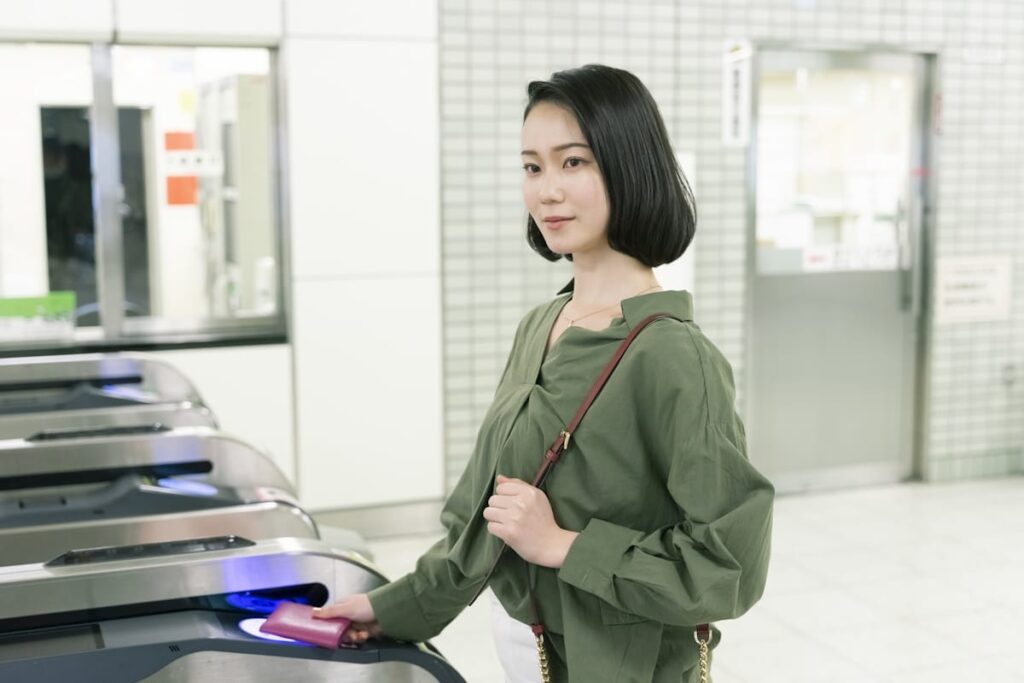[ad_1]
Once a heavily cash-dependent country, Japan continues introducing more payment options for cashless and contactless methods. Now, a subway line in Tokyo becomes the latest to support entering the gates with a credit card tap. But what does this mean for the future of Japan’s beloved IC subway cards?
All aboard the Denentoshi
This week, Japan’s Tokyu Railways Co., Ltd. announced it was trialing credit card and QR code ticket support. As of August 30th, riders can use either form of payment to board the company’s Denentoshi Line in Tokyo, which runs from Shibuya Station all the way to Chūō-rinkan in Kanagawa Prefecture.
The Denentoshi Line is the first in the Greater Tokyo Metropolitan Area to offer credit card payments. However, it’s not the first in Japan. In March, Fukuoka City announced support for credit card payments for all three city-operated lines at all 36 city stations. This followed experimental support for the technology that the city introduced in the previous year.
However, the implementations differ dramatically. Fukuoka’s system is true “touch to pay”: touching a valid credit card (including debit cards, prepaid cards, smartphone, and watch wallets) will pay the rider fee instantly.
By contrast, Tokyu’s system uses Q Skip, which requires first buying a pass with a major credit card. After buying a pass, you can swipe the same card you used to purchase the pass to enter. Alternatively, you can scan the QR code for your pass on a QR code reader.
Tokyu and Fukuoka aren’t the only ones introducing touch payments. Fukushima says it’ll support touch payments on its buses and subway lines beginning in March 2024.
A peek at the clunky Shibuya Station gate

Curious to see how this was implemented, I went to Shibuya Station, one of the endpoints of the Denentoshi, to check it out.
Currently, only a single gate at the Denentoshi supports the pass system. And it’s a bit of a monstrosity. The reader is bolted to the front of the gate, below the existing options for paying by ticket or IC card.

When I posted this on my personal X (Twitter) account, some residents commented on how clunky and ugly this looked. I’m willing to give the benefit of the doubt here. This is obviously an experiment to vet the technology. And it’ll take time (and cost money) to revise gates to make this a more seamless and integrated experience.
The more limiting factor is the need for a pass. Since you must buy a pass beforehand, it’s not a seamless “touch-and-enter” pay experience. If Tokyo Railways uses this throughout its system, it’s bound to create confusion with both locals and tourists who see the credit card symbols and think they can touch to enter.
I’m interested to see how many riders actually use this system. Given the need to buy a pass online beforehand, it’s less convenient than just swiping a railway IC card like Suica or PASMO.
Whither SUICA and PASMO?

Despite its limitations, the support for contactless payment by both Tokyo and Fukuoka City raises an interesting question: What will become of Japan’s famous IC cards?
For years now, residents of Japan have relied on cards such as Suica and PASMO for their transit needs. IC cards have also transcended their use as mere transportation payment cards. You can use all of Japan’s major railway IC cards to pay at most grocery stores, combinis (convenience stores), restaurants, and shops.
Could that come to an end in the next decade? As it is, due to an IC card chip shortage, you can’t easily buy a physical Suica or PASMO anymore. And you don’t really need to: you can add virtual IC cards to your iPhone or Android smartphone and charge them via credit card.
However, if touch payment becomes widespread, IC cards could go out of fashion quickly. The cards aren’t very convenient as a general payment method, as they limit how much of a balance you can carry. For example, you can only have ¥20,000 (around $136) on a Suica card at any moment – even a virtual one. That means, if you use your Suica as a general contactless payment method, you’re constantly charging it.
More retailers in Japan are also introducing support for touch payments. If this trend continues, IC cards could become a relic of the past.
In other words, if you have a physical IC card, hold onto it tight. Chances are that, by 2030, it’ll be a “Reiwa Retro” collector’s item.
What to read next
Japan Rail Companies Limit Train Passes Due to Chip Shortage
Sources
日本初 地下鉄全駅「クレカでピッ」に 対象カード一気に6ブランドへ拡大 福岡. Traffic News
東急田園都市線、カードでタッチ乗車を30日開始 首都圏の課題と狙い. Impress Watch
福島交通・会津バスの路線バスと鉄道に「タッチ決済」含む各種キャッシュレス決済を導入 24年3月から. BCN Retail
[ad_2]
Source link

